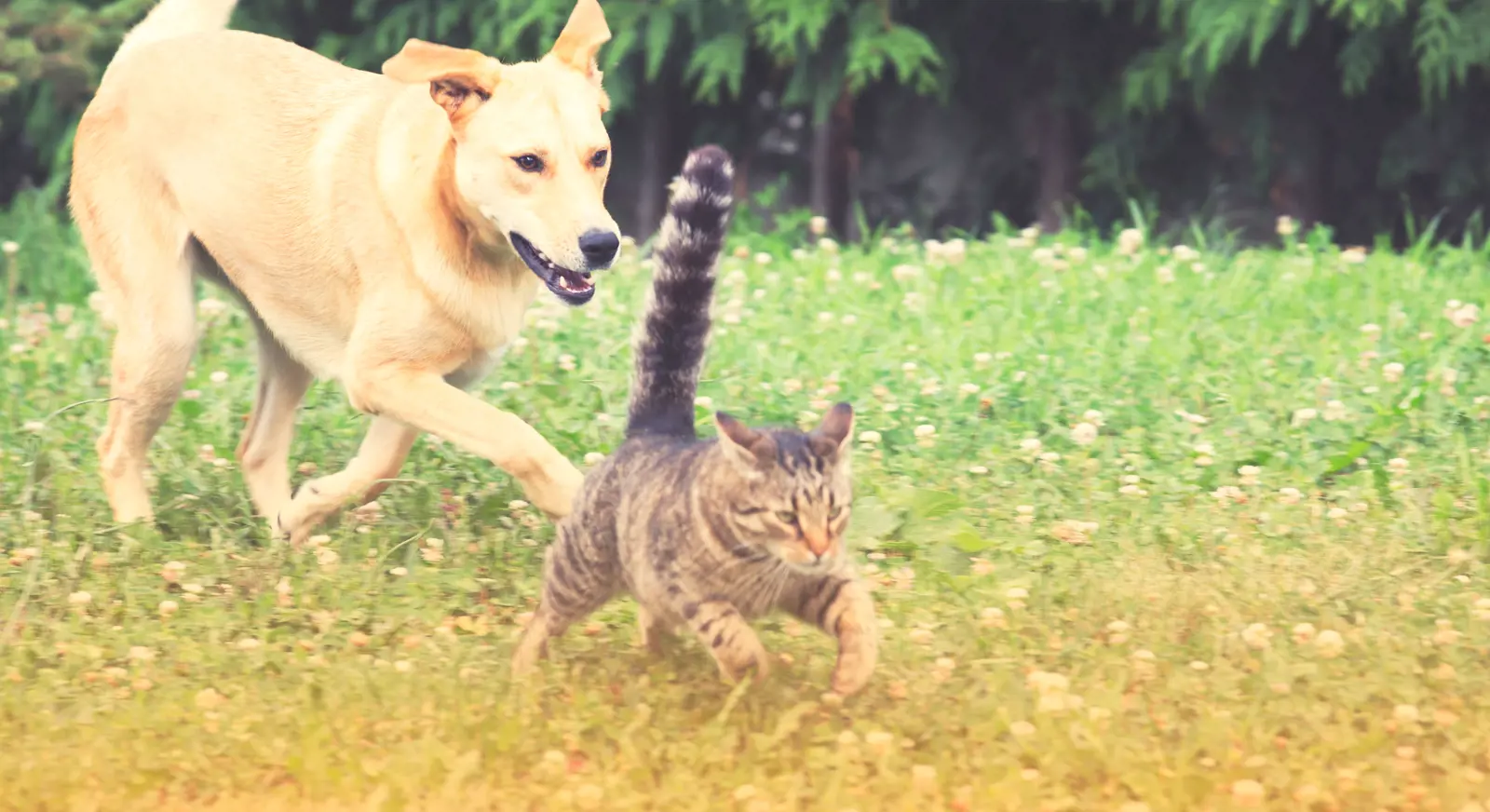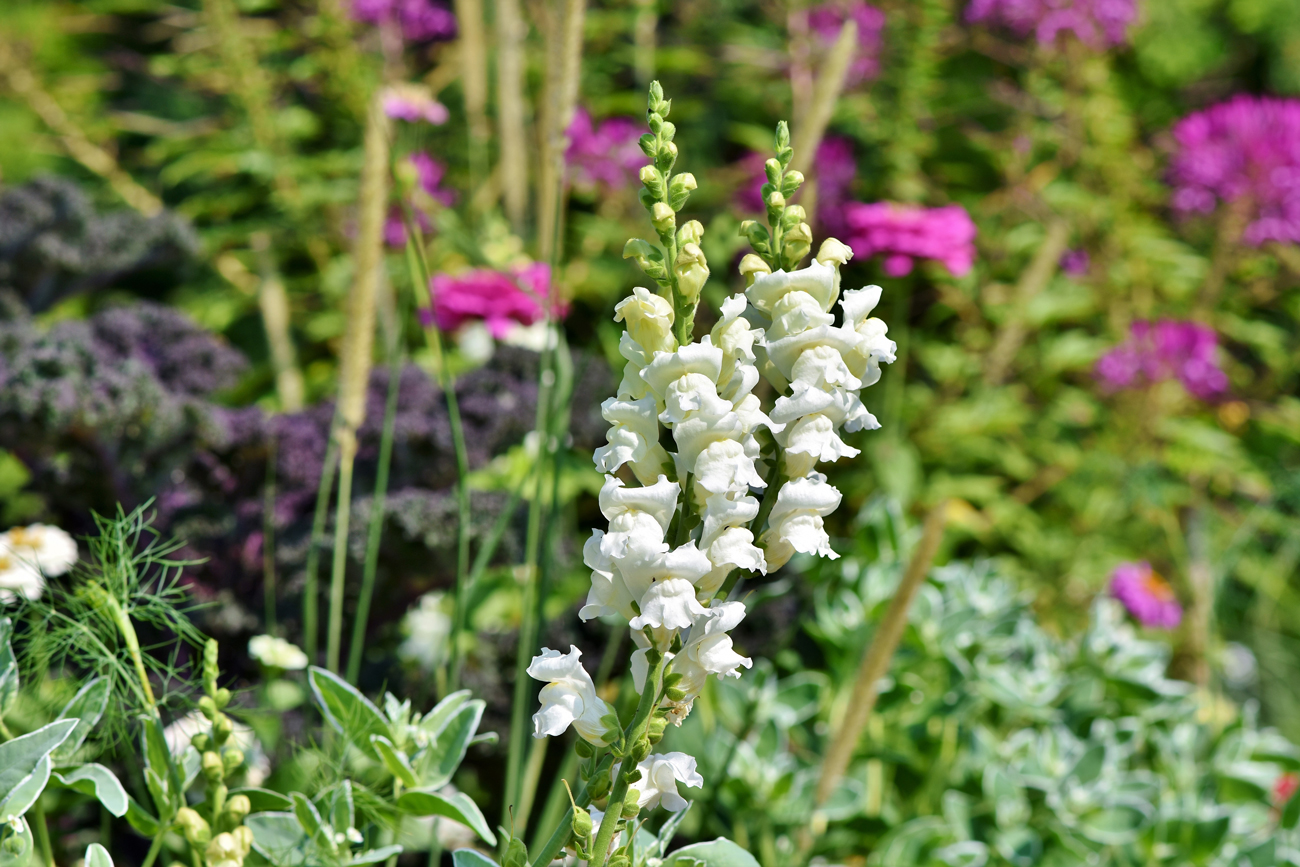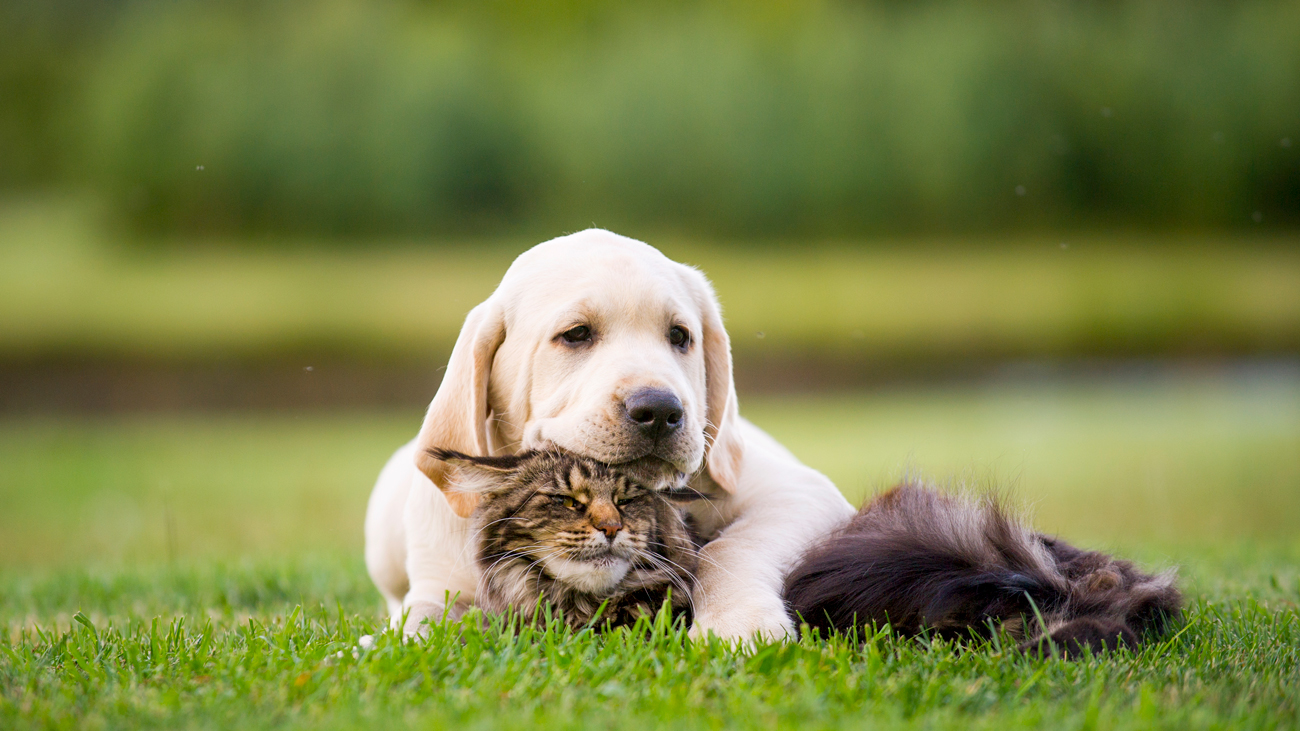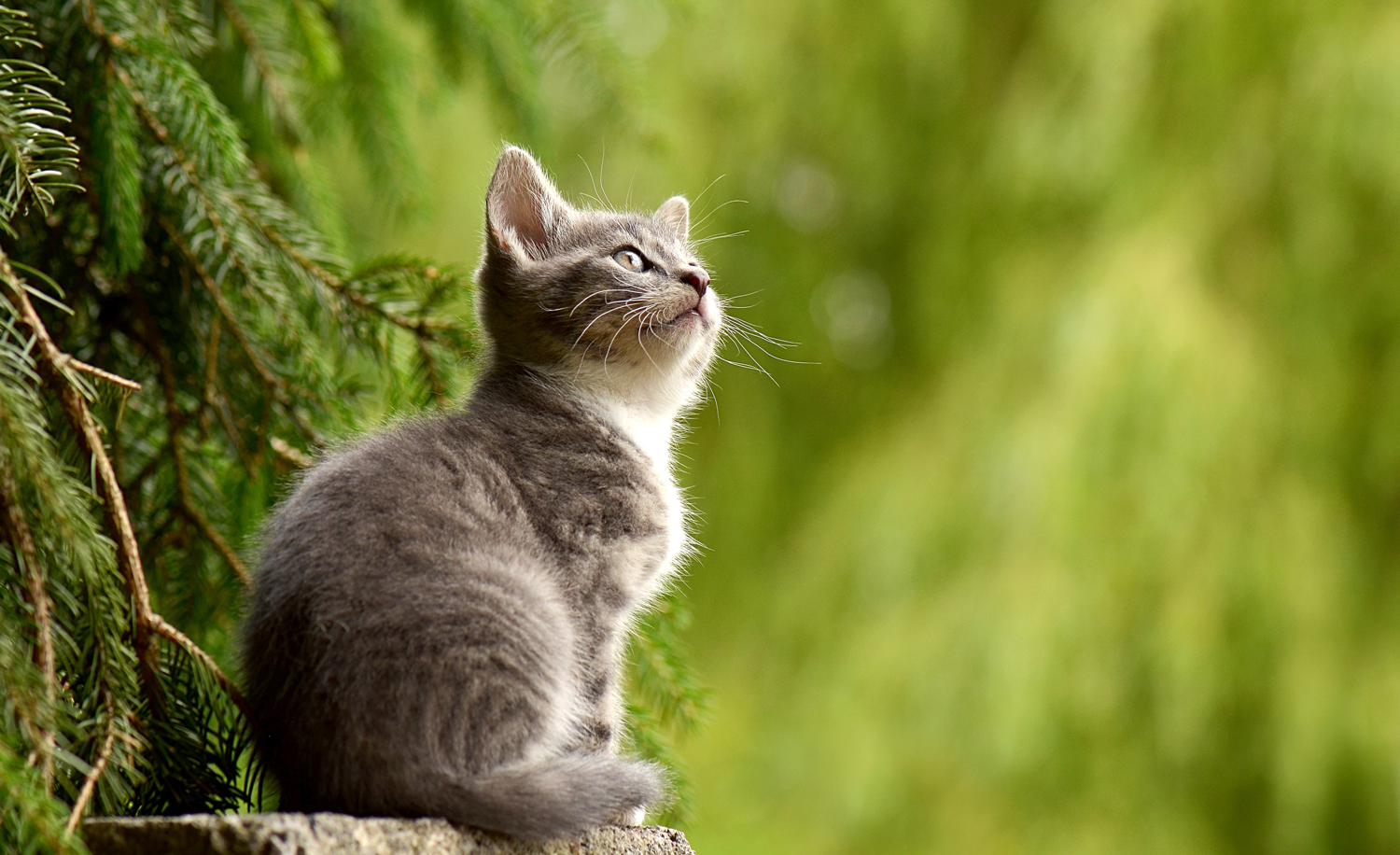How to create a pet-friendly garden
14th April, 2021

As a nation, we really love our gardens and our perfect pets. But while a garden can be a wonderful, stimulating place for your dog or cat to explore, they can be full of hazards for the unwary.
From toxic plants and chemicals to irritating grass seeds there’s plenty that can cause harm to your beloved pet. While insurance for pets can be there to help in a medical emergency, it’s much better to stop the problem before it starts.
And not only can you get rid of dangers, but you can also introduce plenty of things to ensure a long and harmonious relationship between your pet and outdoor space.
These can include planting pet-friendly plants, providing shade and stimulating areas as well as fencing to keep your pet safe.
Read our handy ‘how to’ guide on creating a pet-friendly garden that will keep them safe and stimulated, throughout the seasons.
Whatever the size of your garden or your budget, one of the best things you can do to keep your pet protected is to invest in pet insurance.
Purely Pets' Lifetime Gold products have recently been awarded a 5* Defaqto rating for 2021. So, you know your pet will be well taken care of!
-
Remove poisonous plants
Unfortunately, there’s a huge variety of common garden favourites that are potentially toxic to pets.
When dogs and cats are out exploring in the garden, they can often be found digging in the soil and undergrowth, chewing on leaves and flowers and otherwise having a great time.
However, if you haven’t got a good idea of what’s growing out there then they could easily ingest something highly toxic and make themselves very ill.
Here’s a list of some of the more common garden plants which are toxic to dogs, but there are others too:
-
Amaryllis
-
Azalea
-
Bluebell
-
Chrysanthemum
-
Crocus
-
Daffodil
-
Delphinium
-
Foxglove
-
Hyacinth
-
Hydrangea
-
Ivy
-
Laburnum
-
Larkspur
-
Narcissus
-
Nightshade
-
Oak
-
Tomato
-
Tulips
-
Wisteria
-
Yew
Check the Kennel Club for further information.

For cats the following list includes some of the more commonly seen plants which are poisonous:
-
Chrysanthemum
-
Cornflower
-
Cyclamen
-
Dumb cane
-
Fern
-
Iris
-
Lily
-
Lily of the valley
-
Marigold
-
Poppy
-
Rhododendron
-
Sweet pea
-
Yucca
The Cats Protection holds a list that’s well worth checking out before you purchase any new plants for your garden.
Not every part of these plants is poisonous. And many pets are not likely to eat them directly. But you should be aware they could be potentially very harmful to your pet. For example, while all parts of the lily are poisonous, cats often ingest them by accidentally getting pollen on their fur and then licking it off.
The pets most at risk tend to be those that are new to the garden, where owners don’t know how they will behave. Some pets like eating or chewing on plants whereas others aren’t so keen.
However, even if a pet has never shown any interest in a plant they might decide to ‘help’ you when you’re gardening by chewing on cuttings. If you have a pet and hazardous plants in your garden then you need to be extra vigilant.
As well as plants growing outdoors, it’s also important to be wary of bringing cut flowers into the house. Even the water in a vase could be toxic if flowers such as daffodils or lilies have been kept in it!
If you suspect your pet has eaten something they shouldn’t have, call your vet straight away. If possible, take a sample of what they have eaten in order to help with swift diagnosis.
Even a sample of vomit could help, particularly if it’s of an unusual colour or contains plant material. Common signs of poisoning to watch out for include:
-
Confusion and disorientation
-
Lethargy and lack of responsiveness
-
Excessive drooling
-
Vomiting
-
Diarrhoea
-
Twitching and fitting
-
Breathing difficulties
-
Skin irritations
-
Collapse and coma
The particular symptoms and their severity will often depend on the type of plant and how much has been eaten.
Do not try to make your pet sick or wait to see if symptoms disappear. Having pet insurance in place, can help cover costs to get help quickly before matters get worse.
It’s also important to regularly check your pet’s coat, skin and ears for signs of redness and irritation.
This will give you an early warning sign that they’re coming into contact with something that’s triggering an allergic reaction.
-
Choose pet-friendly plants
Depending on your garden, once you’ve removed the poisonous plants you might have some bare spots that need planting.
This is a great excuse to buy some pet-friendly varieties that will have your pet exploring safely in no time!
The Animal Trust suggests dog-friendly plants include: African violet, berry plants (such as strawberry, raspberry, and blueberry), geraniums, honeysuckle, stachys byzantina (Lambs Ears), lavender, orchids, roses, snapdragons, sunflowers and venus fly traps.
While according to the Blue Cross, cat lovers should opt for: astilbe, erica, freesia, greenbell, lisianthus, limonium, olive, pitto, pussy willow, roses, snapdragons, statice, stock, trachelium, veronica, and waxflower. Not to mention the obligatory nepeta (catmint) and dactylis glomerata (cat grass).
If in doubt, the Horticultural Trade Association has created a code that many garden centres follow. The code on the plant label reads A for poisonous, B for toxic if eaten and C for harmful if eaten. Avoid plants in any of these categories if you want a pet-friendly garden.

-
Keep pests under control naturally
While pests can be the bane of any gardener’s life, they can also pose a threat to pets. Both dogs and cats can become very unwell if they eat a slug or snail infected with lungworm larvae.
These parasites can grow inside your pet and cause haemorrhages in their vital organs and can be fatal if left untreated. Symptoms can include difficulty breathing, coughing, tiring easily and bleeding.
But if you want to keep such pests under control then try to avoid using chemical pesticides as these are also highly toxic to pets. The PDSA suggests some natural alternatives including:
-
Spreading crushed eggshells around plants.
-
Hollowed-out grapefruit skins to trap bugs.
-
Humane traps for mice and rats.
-
Encouraging hedgehogs and birds into your garden. Both will happily gobble up plenty of slugs, snails and other insect pests.
-
Keep sheds and compost bins secure
Unsecured sheds and compost bins can create a number of hazards for pets. Sheds can often contain chemicals and sharp tools that are dangerous to inquisitive four-legged visitors.
Compost bins can contain attractive food scraps that are potentially harmful to your pet. And don’t forget that both places could easily trap a pet if a door or lid swings shut – make sure they are kept securely closed at all times.
-
Lay pet-friendly paths and lawn
A paved garden path rather than gravel, pebbles or stones is usually best for pets. All these materials can easily be swallowed or become stuck in your pet’s paws. Also, the paved path can help keep your pets claws nice and short by wearing them down.
A nice area of lawn is a great space for you and your pet to play and stretch. However, if your lawn becomes tired and in need of reseeding then you have to take care.
Grass seeds are well known to be very painful if they get stuck in your pet’s ears, eyes, mouth or in their paws. Make sure pets are well groomed and keep them away from reseeded areas for at least a few days.

-
Erect a strong, secure fence to deter intruders
Dog theft in particular has seen a double-digit rise over the past year. So, it’s more important than ever for pet owners to erect a good fence to keep pets safe and secure in the garden.
Unfortunately, with so many people looking for the companionship that a pet brings, criminals are looking to take advantage and make a quick buck. The Blue Cross has helpful advice on how to protect against dog theft.
As well as being secure enough to deter criminals and other predators, you also need it to be a decent height and in good repair. You don’t want your beloved pooch to escape on an unscripted adventure!
If your pet is stolen or strays, pet insurance can help with advertising and a reward for your pet’s safe return.
-
Make your garden fun
While you want your garden to be safe for your pet you also want it to provide plenty of stimulation and opportunities for fun times together.
Remember, a bored pet is an unhappy pet which can sometimes lead to destructive and unwanted behaviour.
Here are just some of the many ideas worth exploring – which ones might be right for your garden and your pet?
-
Creating different routes and paths through your garden will mean there’s always a different way to explore. It also means you can keep them away from certain spots. Use clearly defined boundaries such as a low-growing box hedge to create borders.
-
Give your pet different smells and textures to explore with a variety of herbs and other plants. Use raised beds and plant them at different heights and positions. The wind will then be able to circulate and make exciting scent trails to follow. Meanwhile plants such as salix or other ornamental grasses can also dance and sway, providing yet more interest.
-
Build features to give your pet different vantage points to enjoy. Cats love getting way up high, while dogs love getting close to the ground. Use railway sleepers, steps or small benches to provide a variety of perches and dens.
-
Provide a digging area. Some pets love nothing more than having a good dig, but unfortunately this can play havoc with your garden plans. To keep them away from your well-maintained borders and perfectly manicured lawn why not create a dig pit? Whether soil, sand, wood chips or gravel your pet might enjoy this. Particularly if you sometimes hide a toy or a treat for your furry friend to find.
-
A shallow water feature can make an invaluable cooling-off spot on hot summer days. Or plant some trees to create a cool and quiet spot for rest and relaxation when the temperature rises.
If you want to see some of these ideas in action then take a look at the first ever dog-friendly garden to be featured at the RHS Hampton Court Palace gardening show.
As part of the Dogs Trust’s 125th anniversary, the charity teamed up with acclaimed designer Paul Hervey-Brooks to design this superb space.

-
Keep water features safe
Ponds and fountains are a good way to encourage wildlife into your garden and provide interest for your pets. However, they can easily become a hazard if you’re not careful.
Consider fencing off your pond or fitting a guard over the top to stop any mishaps. As with other parts of your pet-friendly garden try to steer clear of adding chemicals to water features or ponds.
Dogs and cats will be tempted to drink from them and could make themselves ill.
Protect your precious pet with Purely Pets
Whether spring, summer, autumn or winter, having fun in the garden is a great way to bond with your pet – but you always want them to play and stay safe. An injury or illness can soon get expensive if you haven’t arranged adequate insurance cover.
Pet insurance from Purely Pets can give your pet the cover they deserve at a price to suit any owner’s budget. Vets’ fees for accidents, illness or both can be covered from between £1,000 and £15,000, depending on the level of cover you choose.
With 15 levels of lifetime cover on offer, you can pick a policy that suits your budget and requirements. You can choose an excess from £60, call our 24-hour Vet Helpline, use our online policy management portal at a time to suit you, and speak to our insurance team for guidance.
Get a pet insurance quote today.
Policy benefits, features and discounts offered may very between insurance schemes or cover selected and are subject to underwriting criteria. Information contained within this article is accurate at the time of publishing but may be subject to change.
Helpful Pages
Recent Posts
Pet Insurance Quote
- 98% claims paid *
- Claims paid directly to vets
- 24/7 vet video consultations
- Interest free monthly payments




